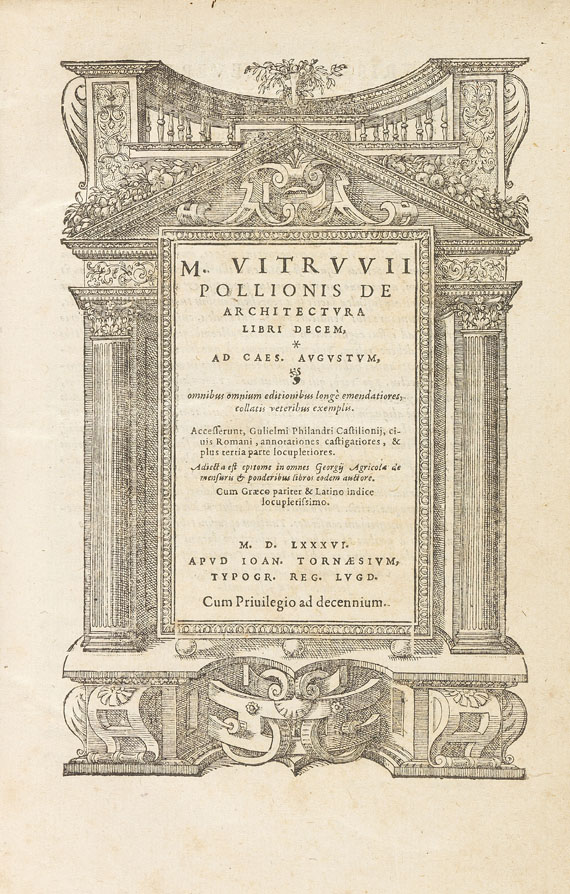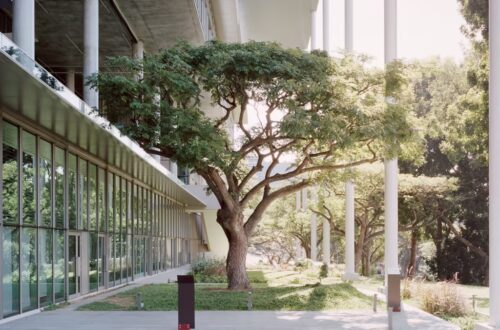
The Vitruvian Triad – How It Established The Foundations Of Good Architecture
‘Beauty is produced by the pleasing appearance and good taste of the whole, and by the dimensions of all the parts being duly proportioned to each other’
Marcus Vitruvius Pollio

‘De Architectura,’ deemed as the only treatise on architecture to have completely survived the holocaust of antiquity date to around 27 BCE. By Roman architect Vitruvius, this multi-volume work is regarded as “the first book on architectural theory” (iDesginWiki, 2019), whose popular regard is substantiated with the content itself: a myriad of subjects on architecture from aesthetics to materials to building adequates. Through his work, Vitruvius identified three principles of architecture known as the Vitruvian Triad: firmitas – firmness, utilitas – utility and venustas – beauty. These three underlying bases “remain the essential components of all successful structural designs” (lib.uchicago, 2011), shaping the foundations of good architecture today.
Firstly it is without doubt that firmness and structural integrity should stand to be put forth in all forms of building and construction. From moats around a castle to barbed wire surrounding a prison, architecture has always played a huge role in safety and security. A building well-designed to please the eye can be ill-fated and unreliable without an architect’s research skills needed to promote durability. The concept is crucial as a basis in structural design, so to make sure that buildings are strong enough to withstand harsh conditions, therefore able to provide safety for those it serves.
Secondly, attentiveness to utility is fundamental for a building to provide “an efficient arrangement of spaces and systems to meet needs of its occupants” (lib.uchicago, 2011). One can see how Norman Foster’s work on the Willis Building excels at serving its inhabitants. By incorporating escalators into a three-story building, creating a roof-top garden, and constructing solar-adjusting floor-to-ceiling windows, Foster encourages a greater sense of community while underlining the
power of democracy in a workspace. The building also ensures exceptional thermal performance thanks to his deep plan and insulating grass roof. In essence, Foster’s way of maximising all parts of a building thrives as an example of how architectural success depends heavily on functionality and utility.
Lastly, considerations for a structure’s beauty is what ultimately decides the architectural quality. This is evident in The Broad – a LA museum whose characteristics sheds a spotlight upon itself, avoiding it getting caught up in the mass of other structures of the artistic city. Designed by DS+R, “the 50,000-square-foot building acts as a seamless buffer between the inside and outside world” (Nick Mafi, AD, 2019). Its exterior honeycomb-like design, established using a semi-porous system, fosters a more urban interface and enhances artworks housed within the building. Furthermore, its porosity suggests two-way vision, tempting passerbys through its lifted corners, making the striking exterior multifunctional in its aesthetics. In the end, DS + R’s knowingly arresting design provides proof of how attention towards a structure’s beauty is able to help architectures flourish in their environments.
Throughout history, architects have based their practice on many standards, yet Vitruvius’ three principles for architectural success have stood best against the test of time: firmness, utility and beauty. Where a building aims to delight people with its design, its durability and utility are just as crucial to ensure safety and an efficient usage of spaces. Likewise, with a focus solely to create security for its occupants, the design itself might not set the appropriate mood to foster spirit and empathy within its community. These three foundations of good architecture have guided architects for centuries and continue to do so today.
Bibliography
- Britannica, The Editors of E. “Vitruvius.” Encyclopaedia Britannica, 11 May. 2022, https://www.britannica.com/biography/Vitruvius.
- Essay Competition Winner 16-18. “Why is Norman Foster so well regarded?” Immerse Education, 2020, https://www.immerse.education/essay-competition/winners/age-16-18-year-2020/.
- “Everything you need to know about the Vitruvian Triad.”Vitruviuss, 12 Aug. 2020, https://www.vitruviuss.com/post/vitruvian-triad.
- “Firmness, Commodity and Delight.” lib.uchicago, 9 May. 2011, https://www.lib.uchicago.edu/collex/exhibits/firmness-commodity-and-delight/.
- JBDAdmin. “De Architectura/ On Architecture.” iDesignWiki, 25 May. 2019, https://www.idesign.wiki/en/tag/principles-of-good-architecture/.
- Nick M., Elizabeth D. “These 13 LiBuildings Redefined Architecture in the Past 5 Years.” Architecture+Design, 6 Aug. 2019, https://www.architecturaldigest.com/story/buildings-redefined-architecture-past-5-years.
- Norman F. “Willis Building.” Foster+Partners, https://www.fosterandpartners.com/projects/willis-building/.
- “Promoting Safety and Security Through Design.” Architecture Matters, 2019, https://architecturematters.org/portfolio/architects-design-safe-and-secure-buildings/.
- SSP Architectural G. “The Hidden Value Of An Architect.” Ssp Architects, 23 Nov. 2018, https://ssparchitects.com/hidden-value-of-an-architect/.
- Terry, A., Terry, F. “Firmitas Utilitas Venustas: The Vitruvian Triad Explained with Alfred and Francis Terry.” Youtube, 24 Jan. 2022, https://www.youtube.com/watch?v=AyaBwMKy9-A.




17 Comments
A WordPress Commenter
Hi, this is a comment.
To get started with moderating, editing, and deleting comments, please visit the Comments screen in the dashboard.
Commenter avatars come from Gravatar.
eTextbookShelf
This is really interesting, You are a very skilled blogger.
I have joined your rss feed and look forward to seeking more
of your wonderful post. Also, I’ve shared your website
in my social networks!
промокод 1xbet
1xBet является одной из самых известных на рынке. промокод 1xbet Большой выбор событий из мира спорта и киберспорта, десятки открытых линий, высочайшие коэффициенты. Кроме того, БК имеет обширный функционал и немногие дает возможность совершать ставки по уникальным промокодам. Используя их, вы можете получить настоящие деньги, не внося абсолютно никаких средств. Это реально! Узнать последний промокод вы можете прямо сейчас, однако использовать его необходимо в соответствии с правилами и инструкциями, которые приведены ниже.
армянки порно
I reckon something truly special in this website.
My website: таджикское порно
zoritoler imol
whoah this blog is great i love reading your articles. Keep up the good work! You know, many people are hunting around for this information, you can aid them greatly.
порно в коглготках
I got what you intend,bookmarked, very decent website.
My website: римминг видео анилингус
https://empress-escort.com/escort-girls-beer-sheva
Good post. I learn something totally new and challenging on websites I stumbleupon every day. Its always exciting to read articles from other writers and practice a little something from other sites.
порно азиаток
As a Newbie, I am always searching online for articles that can help me. Thank you
My website: би порно
is it against instagram rules to buy followers
Great goods from you, man. I have understand your stuff
previous to and you are just too great. I really like what
you’ve acquired here, certainly like what you are saying and the way in which you say it.
You make it enjoyable and you still take care
of to keep it sensible. I can’t wait to read much more from you.
This is actually a terrific site.
buy instagram followers with debit card
Hi this is kind of of off topic but I was wanting to know if
blogs use WYSIWYG editors or if you have to manually code with HTML.
I’m starting a blog soon but have no coding skills so I wanted to get advice from someone with experience.
Any help would be greatly appreciated!
buy tiktok followers with paypal
Great info. Lucky me I recently found your website by
chance (stumbleupon). I have book marked it for later!
ipex poly pipe
I appreciate you sharing this blog post. Thanks Again. Cool.
Manuela
Excellent post but I was wanting to know if you could write a litte more on this topic?
I’d be very thankful if you could elaborate a little bit more.
Thank you!
Lorraine
I got this web page from my pal who informed me concerning this website and now
this time I am browsing this site and reading very informative content here.
Hulda
Terrific work! This is the type of information that are meant to be shared across the net.
Disgrace on Google for no longer positioning this put up higher!
Come on over and consult with my web site . Thank you =)
Bailey
If some one wishes to be updated with most recent technologies
therefore he must be go to see this site and be up to
date every day.
video bokep barat
Hi, just wanted to tell you, I loved this blog post.
It was inspiring. Keep on posting!